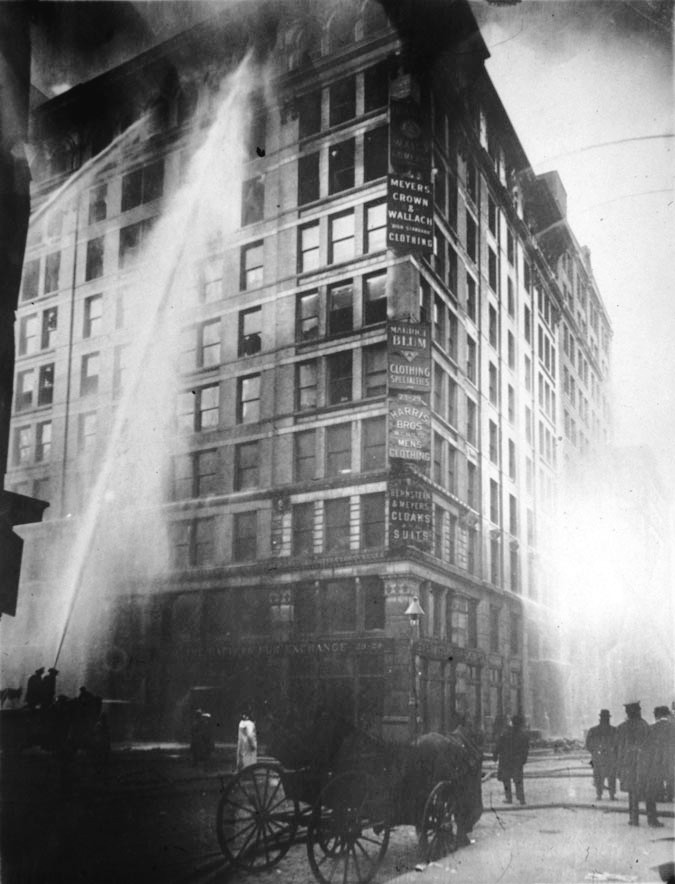 |
| Triangle Shirtwaist Fire |
The Triangle Waist Company, which manufactured women's cotton and linen blouses (known in the early 20th century as shirtwaists) was the site of New York City's worst factory fire on Saturday, March 25, 1911.
The company occupied the top three floors of the 10story Asch Building on Washington Square in Greenwich Village; its workforce consisted of some 500 young seamstresses, mainly Jewish and Italian immigrants between the ages of 13 and 23, and fewer than 100 men. It had been the scene of a successful strike by the International Ladies Garment Workers Union (ILGWU) in 1909 and early 1910.
The fire began on the eighth floor at about 4:45 p.m. and soon became a conflagration. Because the doors and windows had been locked to keep the workers from sneaking out or stealing and because maintenance had been lax, the new, supposedly fireproof factory turned into a furnace.
  |
Most of the workers on the eighth and 10th floors escaped, but on the ninth floor the rear door, which had been bolted, could not be opened. When the rear fire escape collapsed there was no escape route. Many women remained in the building to burn or to suffocate; others jumped nine floors to their deaths with their clothing and hair on fire.
The fire companies that responded to the five-alarm fire could do little since their ladders and hoses reached only to the sixth floor and their safety nets ripped under the weight of three or four women at a time. In fewer than 15 minutes 146 workers, almost all women, died.
The fire produced widespread revulsion and rage. The day after the fire over 100,000 people visited the morgue. The owners of the company, who were themselves Jewish immigrants, were brought to trial for manslaughter and acquitted, but in 1914 a judge ordered them to pay $75 in damages to each of the 23 families who had brought a civil suit against them.
 |
| what left from Triangle Shirtwaist Company |
The fire also provoked reform measures. New York City established the Bureau of Fire Investigation, which gave the fire department authority to improve factory safety. It also formed a Committee of Safety headed by former secretary of war Henry Stimson.
At Henry Morgenthau's urging, the state of New York empanelled a Factory Investigating Commission led by Robert F. Wagner and Alfred E. Smith; its secretary was Frances Perkins (later Franklin D. Roosevelt's secretary of labor), and it was assisted by investigators from the ILGWU. By the end of 1911, the commission had proposed new laws concerning fire safety, factory inspection, and woman and child labor, eight of which were enacted.
In 1913 the commission's work prompted the legislature to pass 25 bills that mandated fire drills, unlocked and outward-opening doors, and building inspections. These laws also increased protection for women and children and limited the practice of piecework. The fire also accelerated efforts to organize factory and sweatshop workers, especially by the ILGWU.